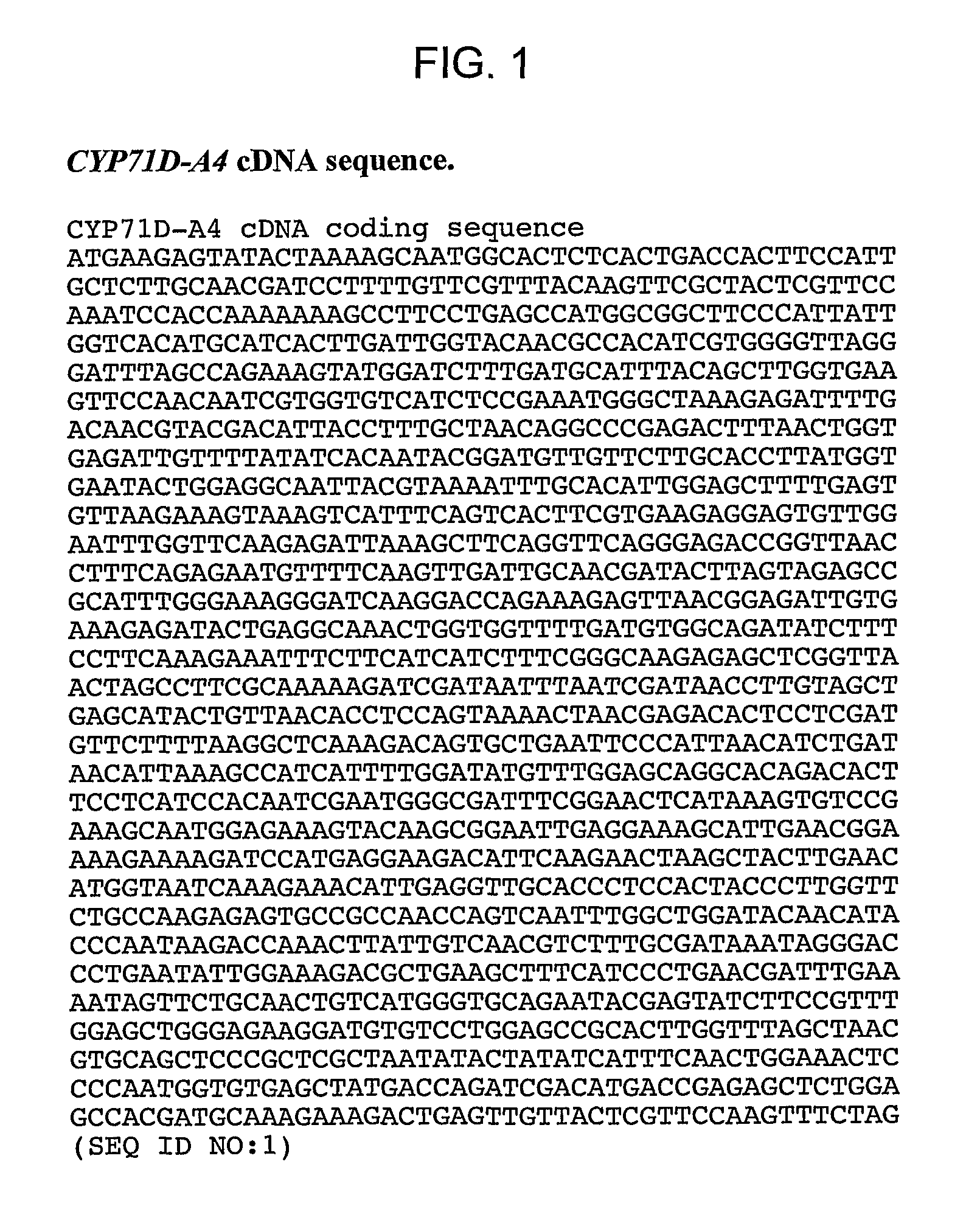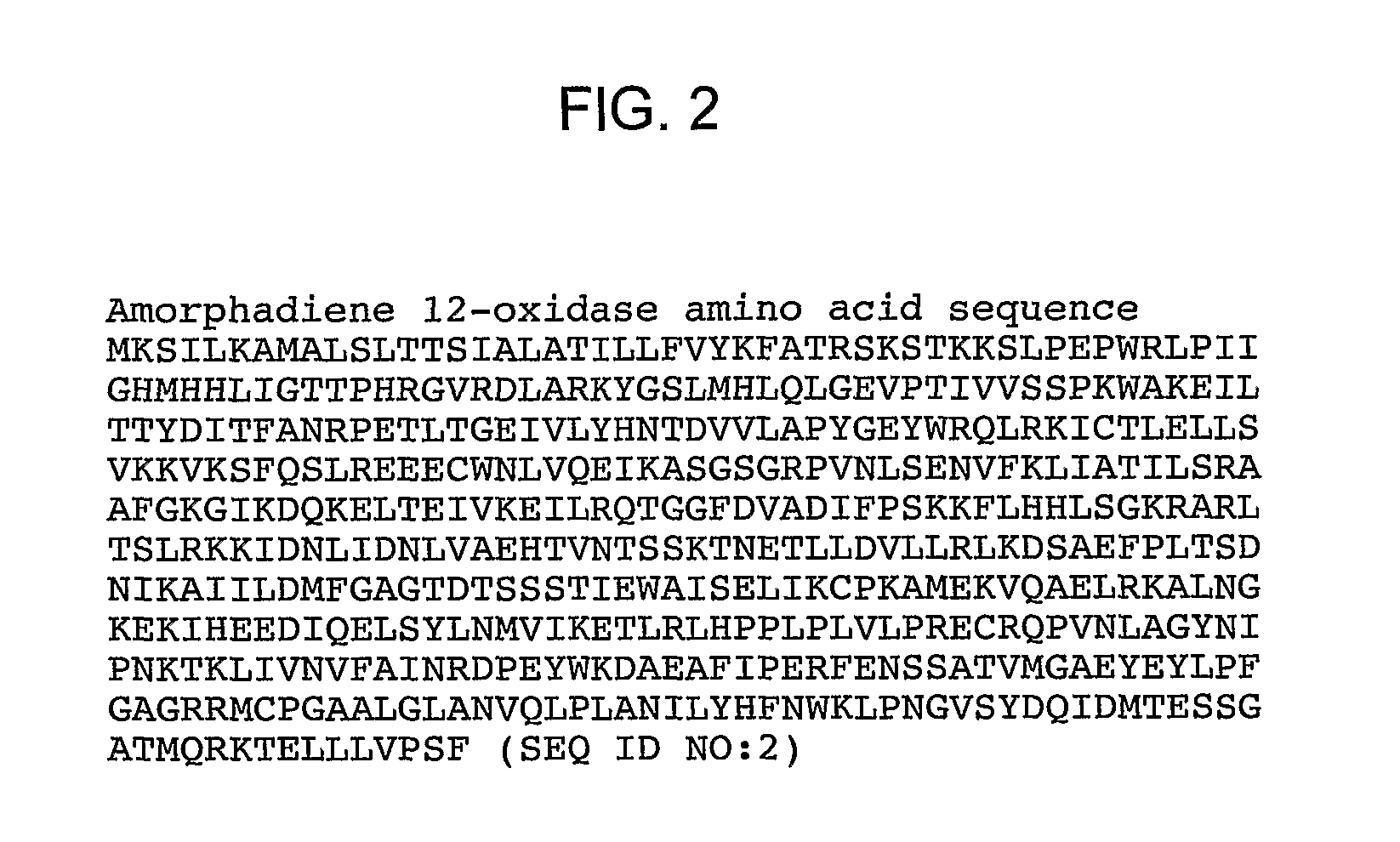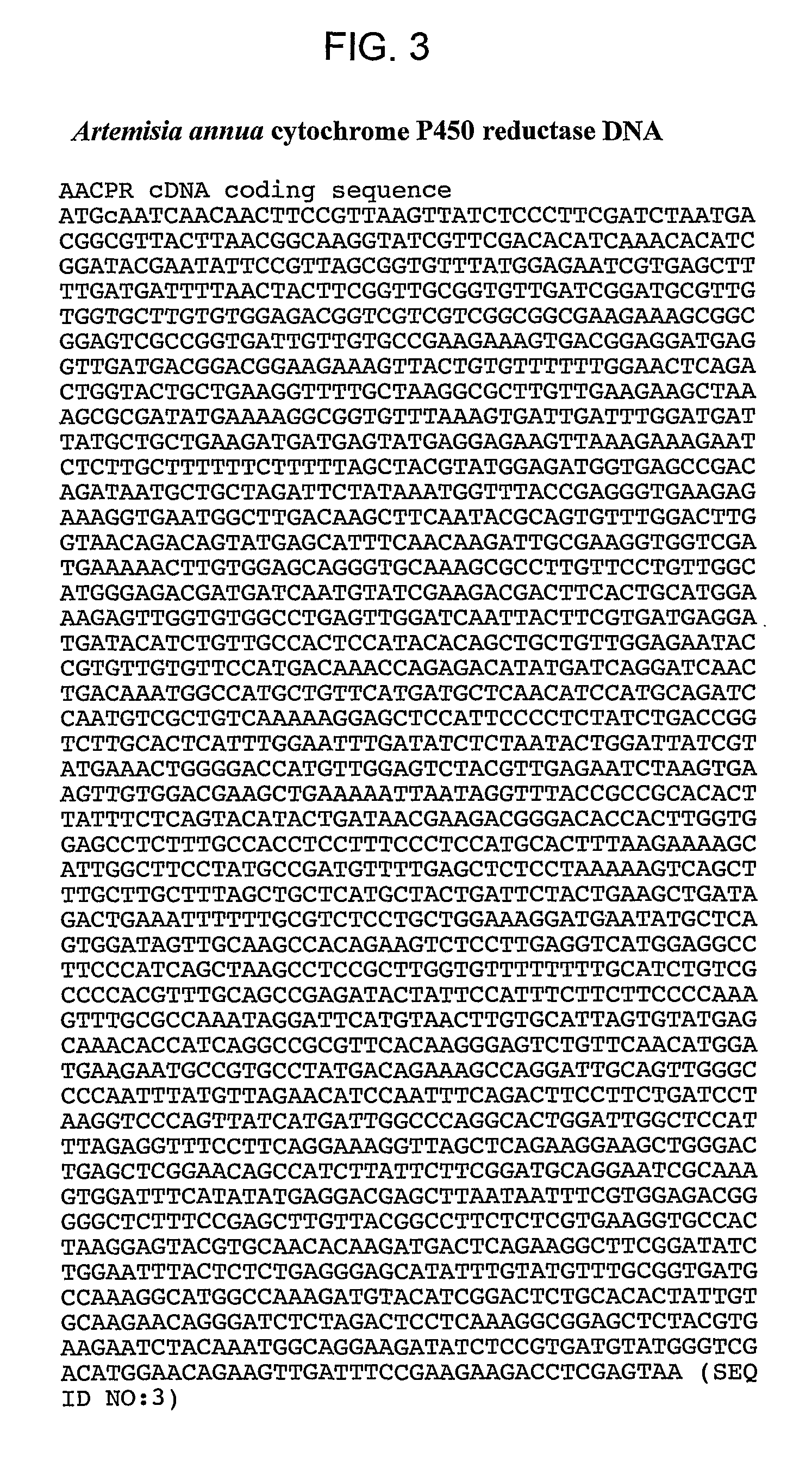Polynucleotides encoding isoprenoid modifying enzymes and methods of use thereof
a technology of polynucleotide and isoprenoid, which is applied in the field of production of isoprenoid compounds, can solve the problems of low yield, low cost, and inability to synthesize economic or impossible natural products, and achieve the effects of low yield and/or high cos
- Summary
- Abstract
- Description
- Claims
- Application Information
AI Technical Summary
Benefits of technology
Problems solved by technology
Method used
Image
Examples
example 1
Cloning and Sequencing of Isoprenoid Modifying Enzymes
[0170]Most enzymes known to hydroxylate a terpene are cytochrome P450s. All available amino acid sequences of terpene hydroxylases were aligned with the amino acid sequences of cytochrome P450s from sunflower and lettuce. These two plant species belong to the Asteraceae family, to which Artemisia annua also belongs. Isoprenoid-modifying enzymes, e.g., the CYP71D family, clustered together, suggesting a common ancestor. Degenerate polymerase chain reaction (PCR) primers were designed, which primers amplify genes of the Asteraceae CYP71D family.
[0171]Cloning of CYP71AV1 (also referred to as CYP71D-A4, or AMO) and CPR cDNA. A cDNA pool was prepared by Super SMART PCR cDNA synthesis kit (BD Bioscience) using 50 ng of total RNA purified from A. annua trichome-enriched cells. Degenerate P450 primers were designed from a conserved amino acid motif of lettuce and sunflower CYP71 subfamily; primer 1 from [Y / Q]G[E / D][H / Y]WR (forward) and p...
PUM
| Property | Measurement | Unit |
|---|---|---|
| temperature | aaaaa | aaaaa |
| temperature | aaaaa | aaaaa |
| temperature | aaaaa | aaaaa |
Abstract
Description
Claims
Application Information
 Login to View More
Login to View More - R&D
- Intellectual Property
- Life Sciences
- Materials
- Tech Scout
- Unparalleled Data Quality
- Higher Quality Content
- 60% Fewer Hallucinations
Browse by: Latest US Patents, China's latest patents, Technical Efficacy Thesaurus, Application Domain, Technology Topic, Popular Technical Reports.
© 2025 PatSnap. All rights reserved.Legal|Privacy policy|Modern Slavery Act Transparency Statement|Sitemap|About US| Contact US: help@patsnap.com



